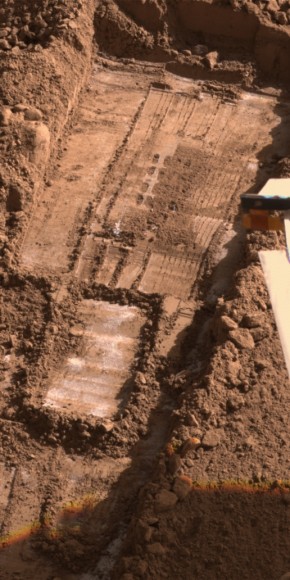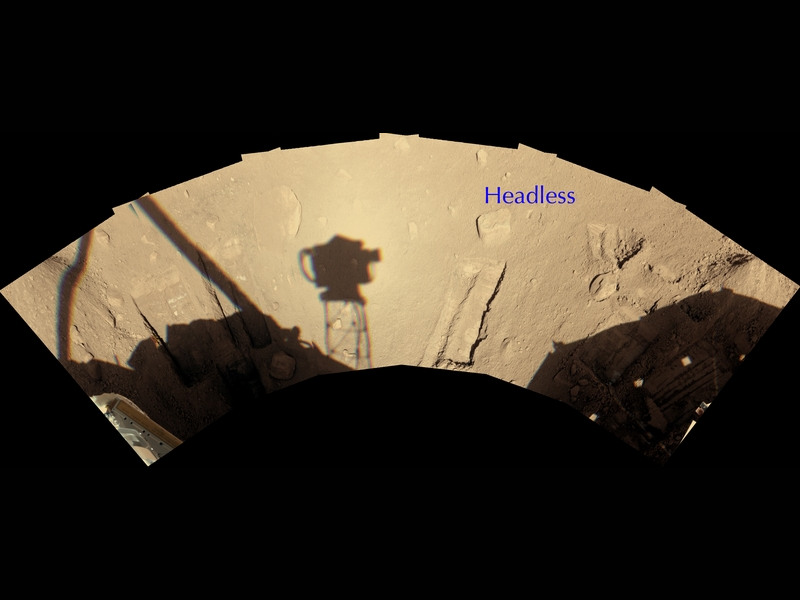[/caption]
Ever wondered what might crawl out from under a rock on Mars? The Phoenix lander is going to attempt to find out today by trying to nudge a rock aside today with its robotic arm to see what might be underneath. Engineers have developed a plan to try moving a rock on the north side of the lander. This rock, roughly the size and shape of a VHS videotape, is called “Headless.” Even though the Phoenix mission has been extended for a second time – the mission is now on through December, the team feels like it’s time to pull out all the stops and do as much work as possible. “We’re getting towards fall in the northern plains of Mars and our sun is dropping lower day by day,” said mission principal investigator Peter Smith on NPR’s Science Friday. “Our days are getting precious.” So, even though Phoenix’s robotic arm was not designed to move rocks, the team wants to give it a shot. “The appeal of studying what’s underneath is so strong we have to give this a try,” said Michael Mellon, a Phoenix science team member at the University of Colorado, Boulder.
“We don’t know whether we can do this until we try,” said Ashitey Trebi Ollennu, a robotics engineer at NASA’s Jet Propulsion Laboratory, Pasadena, Calif. “The idea is to move the rock with minimum disturbance to the surface beneath it. You have to get under it enough to lift it as you push it and it doesn’t just slip off the scoop.”
The lander receives commands for the whole day in the morning, so there’s no way to adjust in mid-move if the rock starts slipping. Phoenix took stereo-pair images of Headless to provide a detailed three-dimensional map of it for planning the arm’s motions. On Saturday, Sept. 20, the arm enlarged a trench close to Headless. Commands sent to Phoenix Sunday evening, Sept. 21, included a sequence of arm motions for today, intended to slide the rock into the trench.
If the technique works, the move would expose enough area for digging into the soil that had been beneath Headless.

The scientific motive is related to a hard, icy layer found beneath the surface in trenches that the robotic arm has dug near the lander. Excavating down to that hard layer underneath a rock might provide clues about processes affecting the ice.
“The rocks are darker than the material around them, and they hold heat,” Mellon said. “In theory, the ice table should deflect downward under each rock. If we checked and saw this deflection, that would be evidence the ice is probably in equilibrium with the water vapor in the atmosphere.”
An alternative possibility, if the icy layer were found closer to the surface under a rock, could by the rock collecting moisture from the atmosphere, with the moisture becoming part of the icy layer.
Source: JPL


What is a VHS videotape?
Joking.
Oh, no, It could be the whole Imperial / Metric disaster all over again .. .. now I hope they are all working in VHS and not Beta !
“Ever wondered what might crawl out from under a rock on Mars?”
Slaters? Ear Wigs?
😉